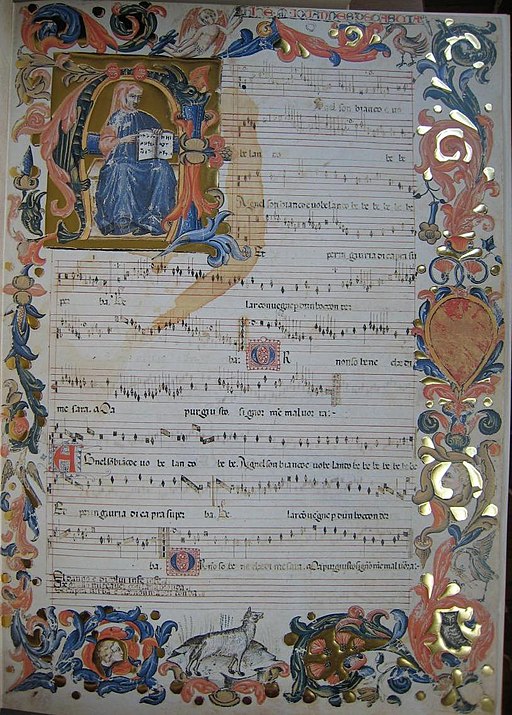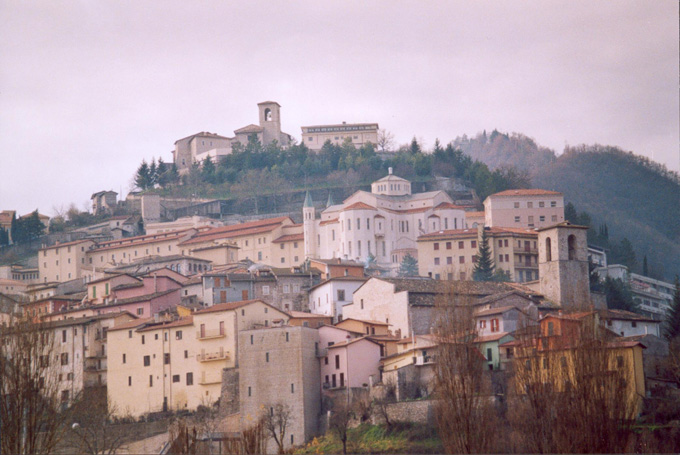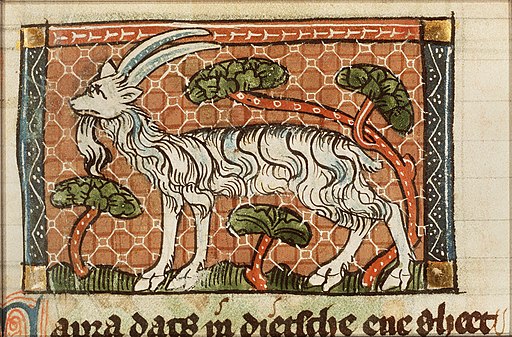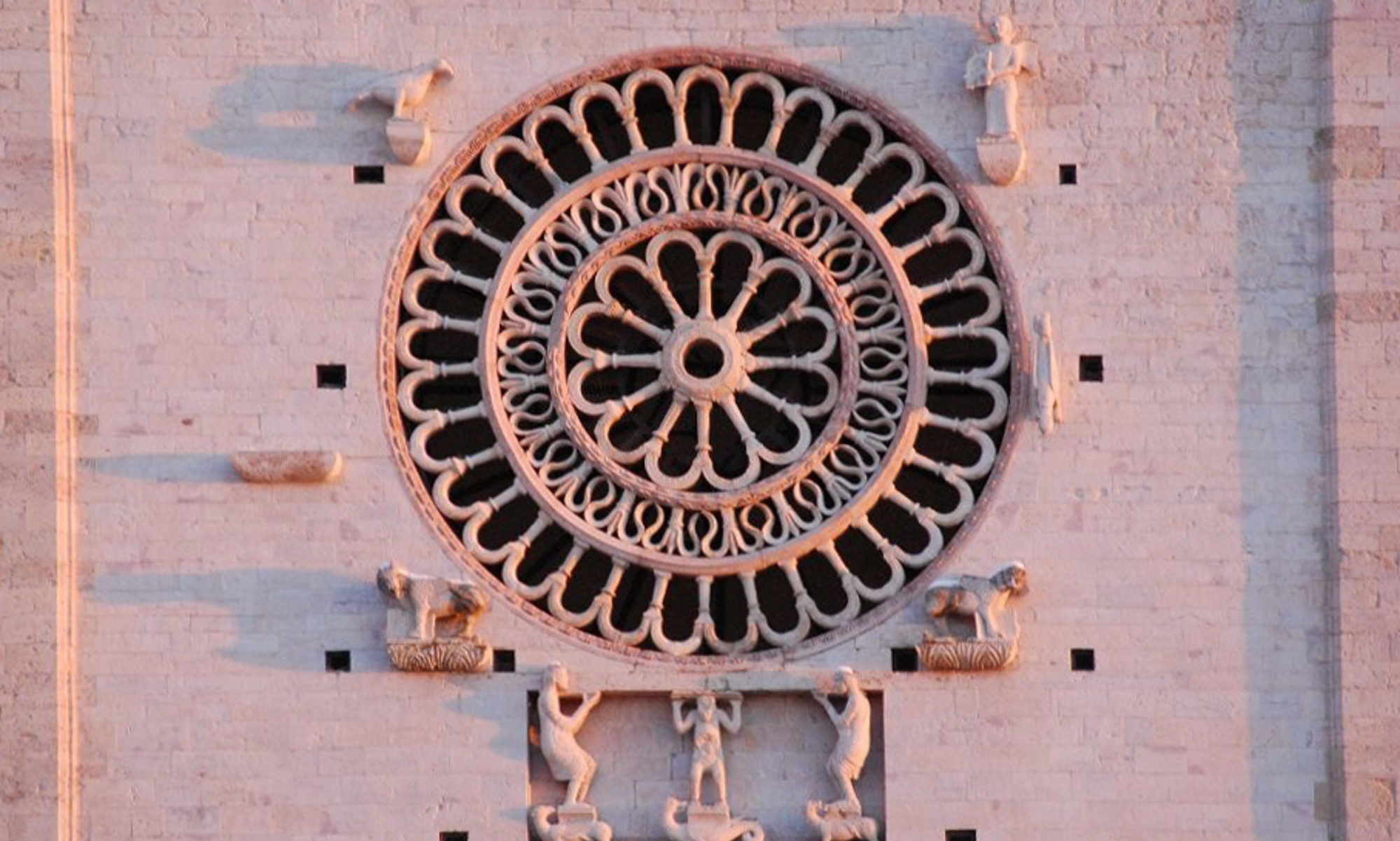
The above composer, pictured in the Squarcialupi Codex, is Giovanni da Cascia, also known as Giovanni da Firenze. So, you might well ask, did he come from Cascia, or from Florence (Firenze in Italian)? Hard to say. I’ve seen people try to finesse the issue by opining that Cascia is a little town close to Florence, but the last time I looked, Cascia was in Umbria – in fact, it’s in the province of Perugia. So, not a Florence suburb. My best guess is he was born in Cascia and went to Florence for the job opportunities.

Some music historians say that Giovanni managed to snag the best job opportunity available to a musician – employment in the cathedral. Later researchers say no, he didn’t. And we don’t really know. Records from this time are so spotty and incomplete that we will probably never know for sure. But he must have worked in Florence for part of his life, since he is called “da Firenze” as much as “da Cascia.”
Giovanni was active in the mid-14th century. He is roughly contemporary with Jacopo da Bologna, who is featured on another page here (“In verde prato“). In fact, the two of them had a musical competition while both working for Mastino della Scala. Giovanni was at that court from about 1329 to 1351. He left us about 19 compositions, scattered across nine manuscripts.
The piece we’re performing here (and remember, this is a casual and informal recording, not anything concert ready) is called Agnel bianco (white lamb), and the text is in the voice of an extremely disgruntled sheep airing his many complaints.

Most of those complaints seem to involve a particularly obnoxious goat:

The page of music shown above is indeed this piece, so if you can find your way around the coffee stain, or whatever that is, you might be able to follow along as you listen.
This performance involves Tim playing a really big recorder, Esther doing a creditable imitation of a sheep, and me trying not to laugh at the words. I’m sure they’re terribly allegorical and full of deep meaning, but on the surface, at least, they’re also pretty funny.
For more about a medieval lamb (later a sheep) with his own claim to obnoxiousness, see my book Lady of the Seven Suns, in which I play around with the legend that Francesco (Francis of Assisi) presented Lady Giacoma with a charming little lamb, which she then had to raise and coexist with. In a palace. In Rome. I’m sure you can imagine…

